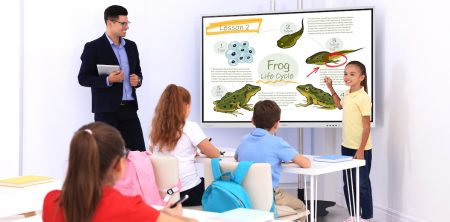In an increasingly diverse world, the role of a teacher extends beyond academic instruction to include fostering cultural awareness and promoting inclusive attitudes. Among the various resources available for this purpose, kids animated shows have emerged as particularly effective tools for introducing children to diverse cultures, perspectives, and experiences in an accessible and engaging format. These colorful, narrative-driven media offer unique opportunities to reflect our multicultural society and challenge stereotypes from an early age.
Modern animated shows increasingly feature characters representing various ethnicities, abilities, family structures, and cultural backgrounds—creating visual representations of diversity that children might not otherwise encounter in their immediate environment. Perceptive educators recognize these shows as valuable entry points for discussions about cultural differences, inclusion, and respect for others. By highlighting these elements, teachers help students develop a more nuanced understanding of the world and their place within its diverse tapestry.
The power of animated media in cultural education lies partly in its ability to normalize diversity through storytelling rather than explicit instruction. When children regularly see characters from different backgrounds working together, solving problems, and forming friendships, they internalize the message that diversity is an ordinary and positive aspect of community life. This subtle approach often proves more effective than direct lectures on tolerance, as it shapes attitudes through repeated exposure to positive multicultural interactions.
Educational research has consistently demonstrated that children develop awareness of racial and cultural differences as early as age three, making early childhood an optimal time for introducing inclusive content. Teachers in preschool and elementary settings use carefully selected animated shows to counteract potential biases before they become entrenched. These educators understand that animated characters often become role models for young viewers, influencing not only their knowledge but also their attitudes and behaviors toward others who may differ from themselves.
Many contemporary animated shows incorporate cultural elements with remarkable authenticity, often consulting with cultural experts during production to ensure respectful and accurate representation. From celebrations and traditions to food, music, and family dynamics, these cultural elements are woven naturally into storylines rather than presented as exotic oddities. Teachers build upon these authentic portrayals by bringing supplementary materials into the classroom that deepen students’ understanding of the cultures represented in their favorite shows.
Language diversity represents another valuable aspect of many animated productions. Characters who speak multiple languages, use different dialects, or communicate in non-verbal ways demonstrate the variety of communication styles in our global community. Teachers leverage these examples to foster appreciation for linguistic diversity and to support language learners in their classrooms. Some educators report that students show increased interest in learning new languages after exposure to multilingual animated characters.
Beyond cultural and linguistic diversity, modern animated shows increasingly include characters with various abilities and learning differences. Characters who use wheelchairs, communicate through sign language, or demonstrate neurodivergent traits are becoming more common in children’s animation. These inclusive representations help normalize disability as part of human diversity rather than something to be feared or pitied—an important message that teachers reinforce through thoughtful classroom discussions.
Family diversity also features prominently in contemporary animated content, with shows depicting various family structures including single-parent households, blended families, adoptive families, and families headed by same-sex parents. Teachers use these representations to help all students feel that their family structure is valid and recognized, while simultaneously broadening all children’s understanding of the different ways families can be formed and function successfully.
The impact of diverse representation extends beyond social benefits to include academic engagement. Research indicates that students show greater interest and participation when they see themselves reflected in educational materials. For children from underrepresented groups, seeing characters who share their background or experiences can boost self-esteem and academic motivation. Perceptive teachers recognize this connection and deliberately seek out animated content that reflects the diversity of their student population.
While many animated shows now incorporate diversity naturally, teachers still play a crucial role in guiding students to critically analyze representation in media. They pose thoughtful questions about which groups are represented and how, which perspectives might be missing, and whether portrayals reinforce or challenge stereotypes. Through this guided analysis, students develop media literacy skills alongside cultural awareness—learning to be thoughtful consumers of all content they encounter.
Some educators take the use of diverse animated content further by creating cross-cultural exchange activities. After viewing shows depicting specific cultural practices, students might connect with classrooms in those regions through video calls, exchange letters with students from different backgrounds, or participate in cultural celebrations highlighted in the animations. These extensions transform passive viewing into active cultural engagement and authentic learning experiences.
The collaborative viewing of diverse animated content also creates shared reference points that facilitate discussions about complex social issues. When all students have watched the same episode depicting, for example, a character experiencing bias or exclusion, teachers can refer to this shared experience when addressing similar situations in the classroom. This approach often makes difficult conversations more accessible and less threatening for young learners.
In conclusion, thoughtfully selected animated shows serve as powerful vehicles for promoting diversity and inclusion in educational settings. By leveraging the engaging nature of animation, teachers transform entertainment into opportunities for cultural learning, perspective-taking, and the development of inclusive attitudes. As animation continues to become more representative of our diverse world, its potential as a tool for cultural education will only increase—providing teachers with ever more resources for preparing students to thrive in a multicultural society.

